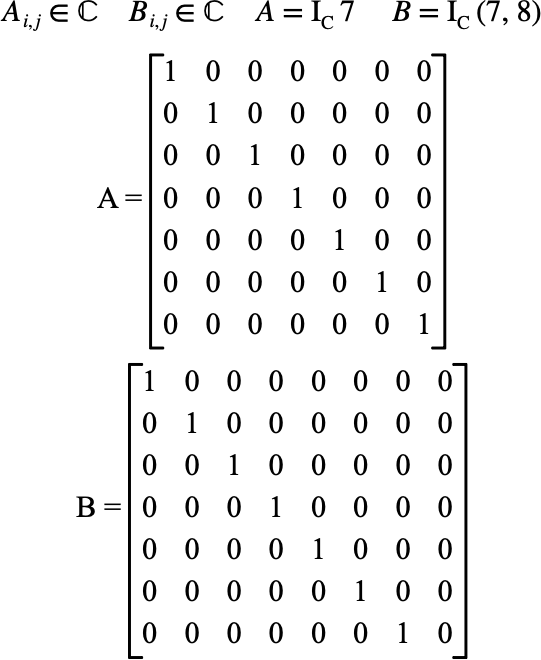\(\text{I}_\text{C}\)¶
You can use the \(\text{I}_\text{C}\) function to insert a complex identity matrix.
You can use the \idcomp backslash command to insert this function.
The following variants of this function are available:
\(\text{boolean matrix } \text{I}_\text{C} \left ( \text{<side>} \right )\)
\(\text{boolean matrix } \text{I}_\text{C} \left ( \text{<rows>}, \text{<columns>} \right )\)
The single parameter version of the \(\text{I}_\text{C}\) accepts an integer \(\text{<side>}\) parameter that indicates the number of rows and columns. This version will always create a square matrix.
The two parameter version of the \(\text{I}_\text{C}\) accepts integer \(\text{<rows>}\) and \(\text{<columns>}\) parameters that specify the dimension of the created matrix.
Figure 154 shows the basic use of the \(\text{I}_\text{C}\) function.

Figure 154 Example Use Of The IC Function¶
